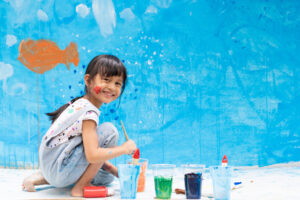How Creative Art Activity Benefits Preschoolers
![]()
- Posted by abrakadoodle.com.sg
- Categories Kids Art Activities
- Date 29 June 2022
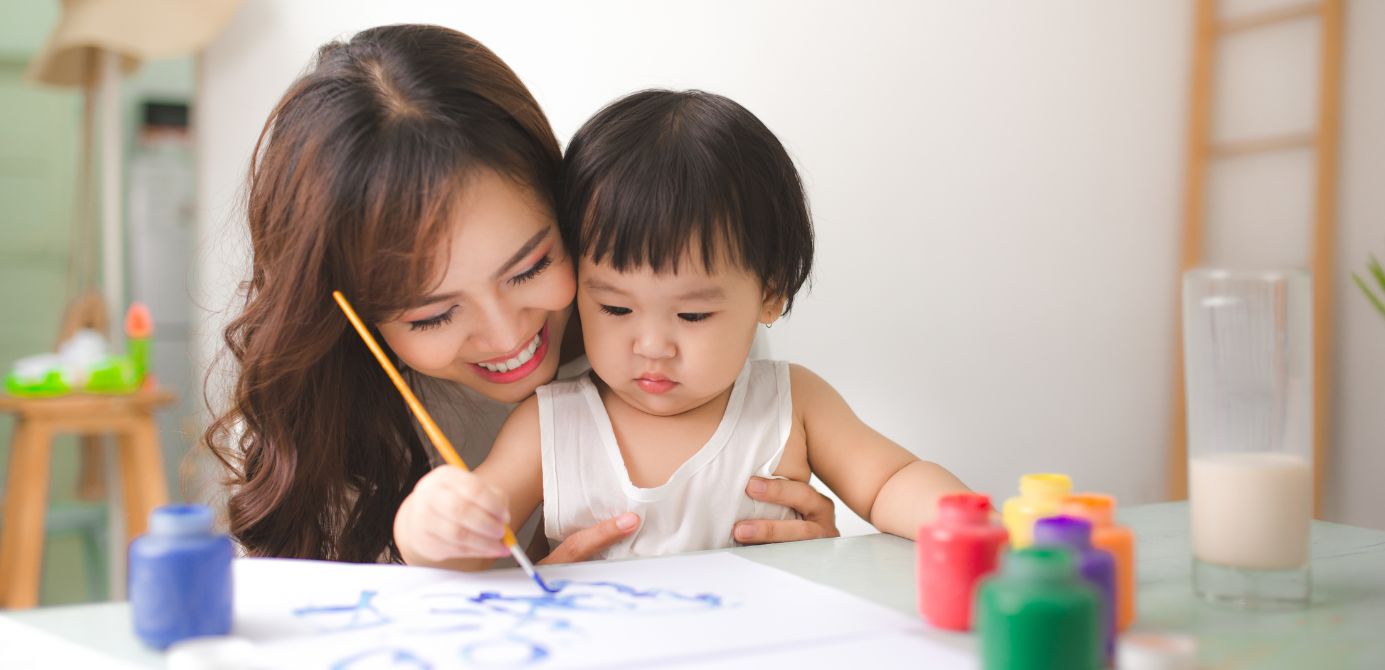
Young children love being creative, getting messy and taking pride in looking at their masterpieces once they are finished. Another great thing about art activities for toddlers is that it aids child development in more ways than one.
Creative art activities play a fundamental role in a child’s everyday life and encouraging her to learn more about them will only increase the benefits as she gets older. Creative projects will not only stimulate your child’s imagination but also helps her understand feelings better as well as hone their thinking and coordinating skills.
It is not possible to separate physical development from other aspects of a child’s growth, because a child learns by being active, and through multi-sensory, physical interaction with the world around her. Children manipulate their senses to engage in art and are constantly developing, practising and refining their skills.
Simple activities like learning to use a pair of scissors can improve your child’s ability to do things like tying shoes. When young children use their hands to do art, they improve their fine motor skills, improve their coordination, and they are easily able to use both hands at the same time.
Creative art ideas give children a much-needed chance to express their ideas, build on their observational skills, gain confidence, promote feelings of self-worth and develop their creativity and imagination, as well as offer them time to relax.
Table of Contents
ToggleArt allows creativity to develop
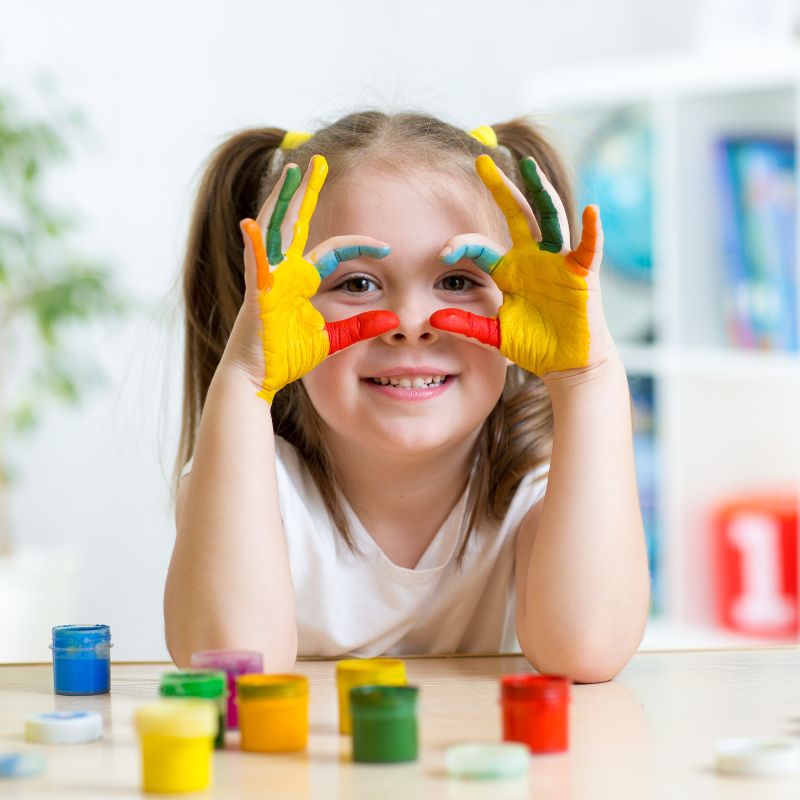
By doing something creative, you prepare the ground for self-expression, especially when little children don’t have or know the words to express and cope with their feelings. Art is the most important way to help a child develop uniformly. Art also fosters mental growth by providing opportunities for children to try out new ideas, new ways of thinking and problem-solving.
In young children, creative art activities develop from their experiences with the process, rather than worrying about the finished product. Do not confuse creativity with talent, skill, or intelligence. Creativity is a process, it is about thinking, exploring, discovering, re-imagining and doing something that may not have been done before.
Art helps flex all the muscles
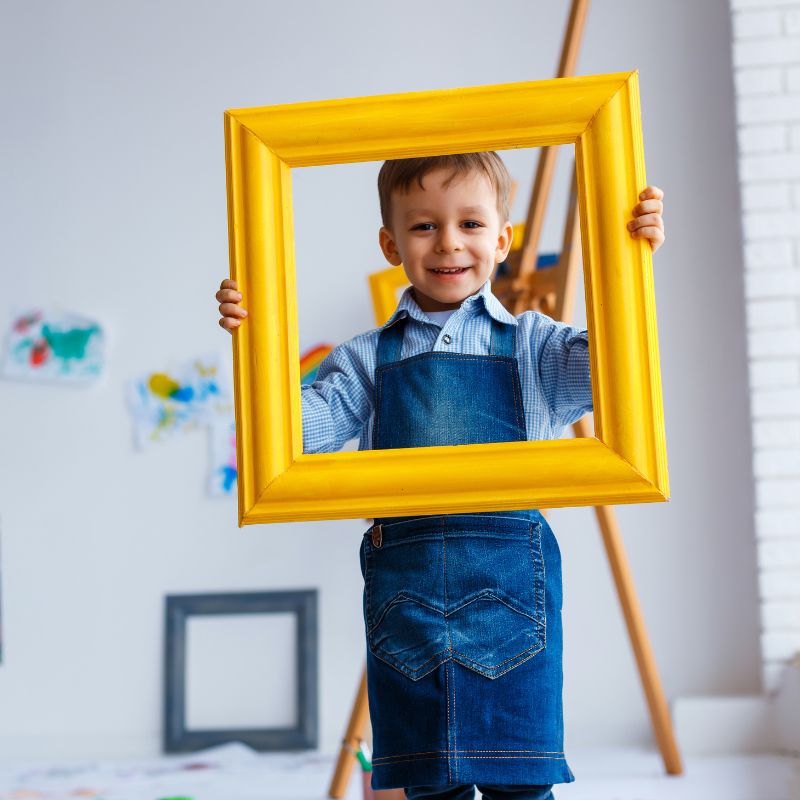
Exercising both the small muscles of the hands and fingers and the bigger muscles of the arms and legs, helps children gain control over body movements, retain flexibility and improve overall strength.
When young children begin to use their fingers to manipulate a paintbrush, crayons and markers they are working on developing their fine motor skills as they stretch and use those small muscles of their hands. This also increases their coordination skills as they begin to learn and use both hands at the same time.
Art makes all these movements happen when children paint, colour, glue and cut. The quicker their fine and gross motor skills develop the more they are able to do things on their own, from being able to change their clothes to combing hair. From hopping and jumping to running.
By exploring their physical dexterity through creative work, children often acquire skills that come in handy in other areas of their lives. Children who learn to pour and mix paint or water, for instance, become more adept at pouring drinks without spilling.
Manipulating small items helps children develop the dexterity to hold and control a paintbrush or a pencil, the first step towards being able to write. Clearing up after a messy art activity raises child’s awareness of how to be responsible for their actions.
Art helps expand the mind
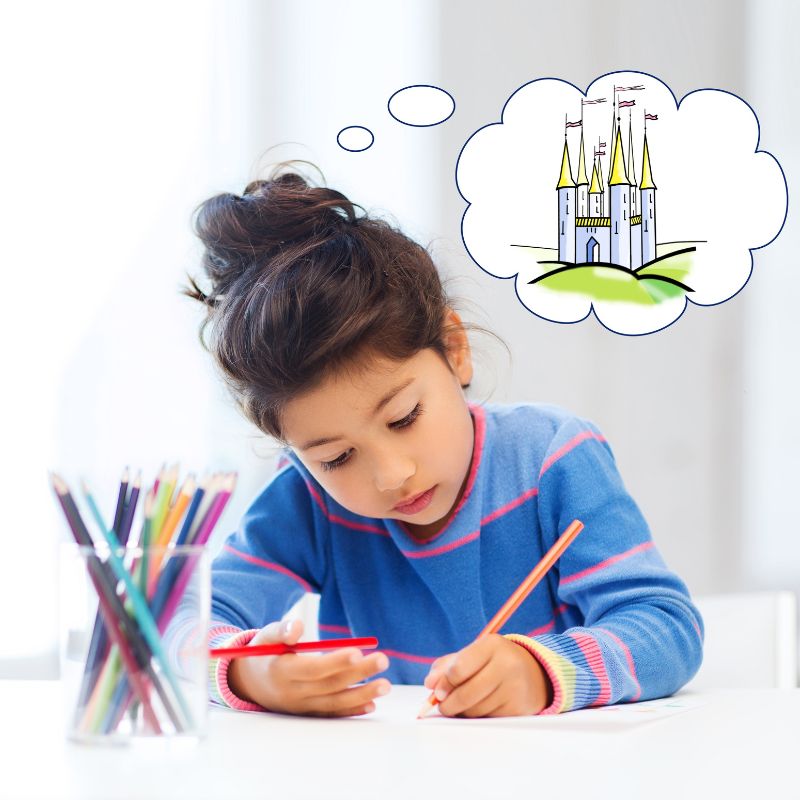
Creative art activities cover a wide range of areas – from speaking and reading to listening and understanding. When your child is involved in making art, she gets to talk about her work, helping her develop communication skills. You are also helping your child build new neural networks in her brain.
As children are naturally creative, they often are natural storytellers. They love to make things up and have imaginary worlds they often will refer to. They also love to get involved in making things, which gives them a sense of achievement.
When children are engaged they learn more, so creative art activities are all about harnessing inherent strengths that exist within children. Capture a child’s imagination, which can make learning more fulfilling. It encourages reluctant readers, builds confidence, and helps teach practical skills.
The benefits are numerous and wide-ranging. Creative art activity helps focus the mind on new ideas and projects. It is an opportunity for a child to do her best without having to face critical judgements along the way as creativity is characterised by originality and the freedom to express herself.
Art helps to grasp math concepts
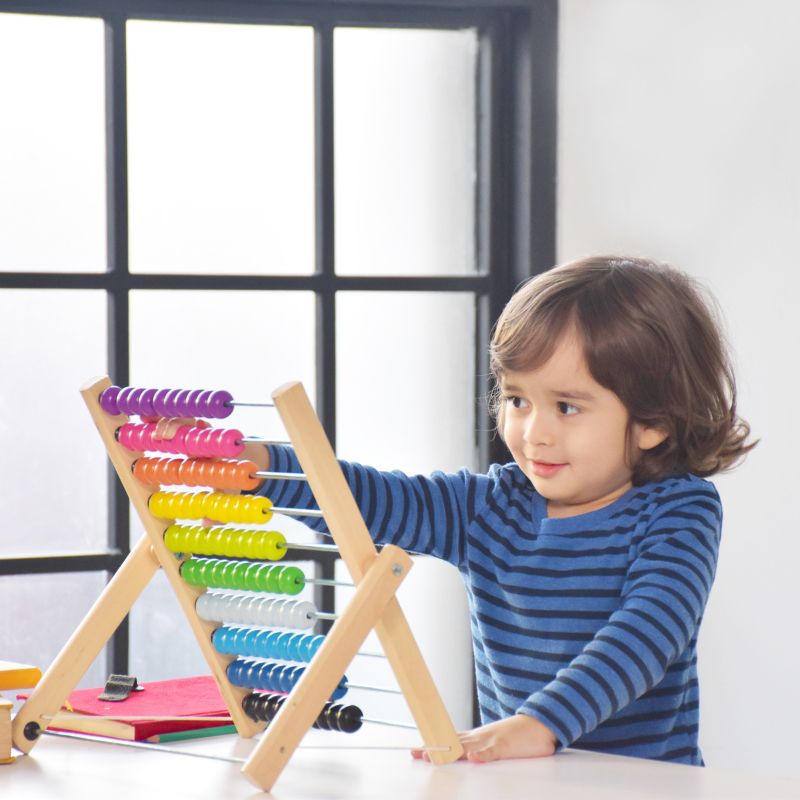
Overcoming challenges is part of life’s journey. Creative art activities help your child to think, make connections and work things out by herself. It assists a child in sorting, organising and analysing information in a way that makes sense.
Making art helps improve oral and listening skills encourage team building and can be made practical to suit those who may struggle with traditional methods of learning.
Research has shown that creative art activities encourage children to think creatively. Stay more open to new ideas and challenges. As this gives them a greater sense of ownership over their learning, they become more interested in discovering things for themselves and turn out to be more effective learners.
People usually don’t see the connection between basic math skills and art activities. But children learn to recognise different shapes, count and sort out and even measure out lengths and sizes of art materials. To master math, you need a good thinking and problem-solving skills which creative art activities help activate and foster.
Creative art activities provide a wonderful way for your child to think and try out different solutions and achieve whatever she wants.
Art helps boost self-esteem
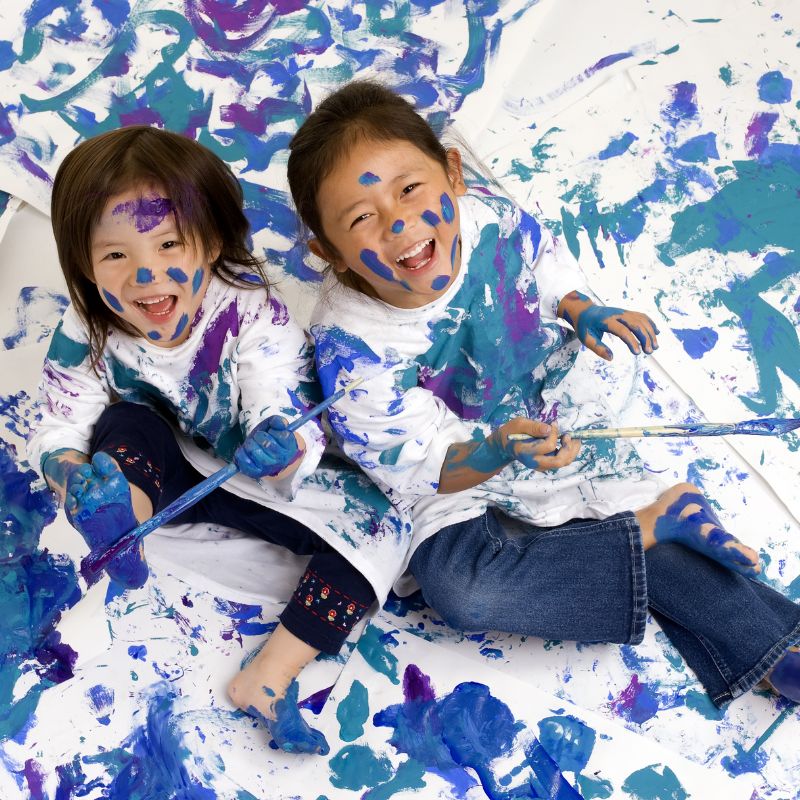
Being a young child is tough these days. Comparison and bias often become fierce, leading to feelings of unworthiness that can have negative consequences in years to come. A new study found that young children involved in creative art activities more often feel better about themselves. In fact, when parents join them in creative pursuits, it makes children feel even better.
Creative art Ideas give younger children a sense of achievement and allow them to take pride in their work. It usually is a great and safe way to discover that it’s okay to make mistakes and that getting things ‘wrong’ can lead them to come up with a whole new idea.
It builds self-confidence and develops a child’s self-regulatory skills. Waiting for the watercolours or glue to dry helps them develop patience, which all children need even in this age of instant gratification. The researchers surmise that creating art helps children people feel unique regardless of parental input.
Creative art activities have been shown to support a sense of social identity and encourage goal-directed behaviour, as well as enhance social resilience. The best part, it is not necessary for children to be good at art.
Engagement, and not ability is the key. Stressing the inherent value of the process encourages more participation by children who are often reluctant to get involved owing to fears of failure.
Art helps deepen parental bonding
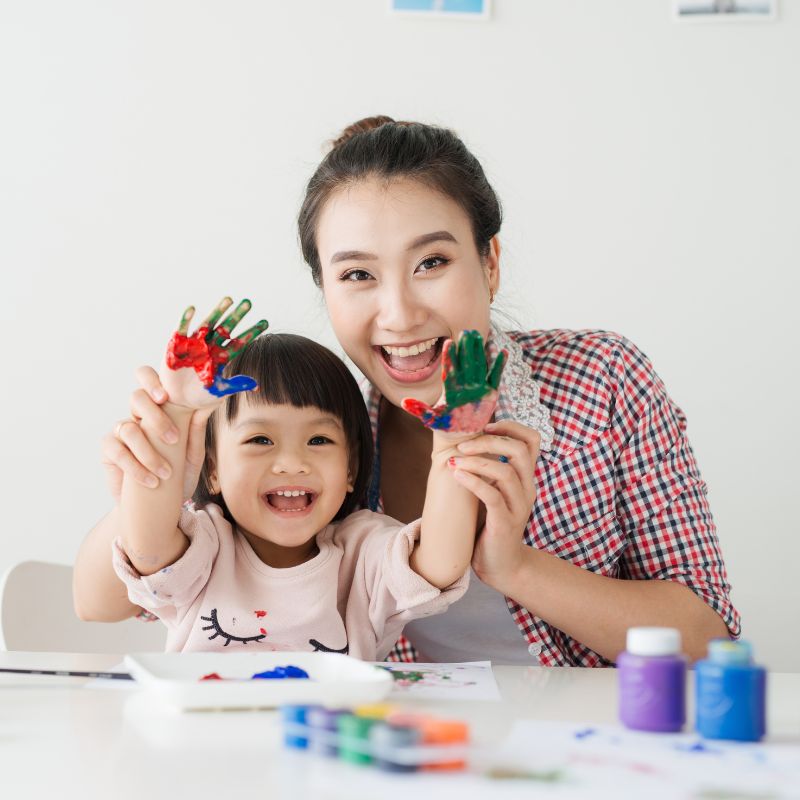
The pace of today’s lifestyles leaves parents with insufficient time to spend with their little ones. Most parents are constantly looking for ideas that don’t merely keep children engaged but also optimize the time spent with them.
Creative art activities offer the perfect avenue to combine both. As a matter of fact, children love spending their time with their parents. As they get to spend quality time bonding with you and at the same time, you are together creating lifelong memories that both will cherish.
The more often you make art together, the more you get to talk to each other. Discuss ideas and dive deeper into the subject matter. You also exchange ideas and talk about what you think, feel and care about. And as an added bonus, during the early years of your child’s growth, you are inculcating values which stay with them for life.
About Abrakadoodle
This is the kind of process art learning experience that inspires children to think different, be innovative, and devise ways that teach about interesting things found in the real world. Changing the way children discover and imagine. Ignite their minds to think, play and learn like never before.
If you like to enrol your child in art classes or participate in a workshop, give Abrakadoodle a call. Or better still, make an appointment with the head of a centre near you.
Get a hands-on exposure to an experience that will make you see art in a way that adds value to life.
Frequently Asked Questions
You may also like
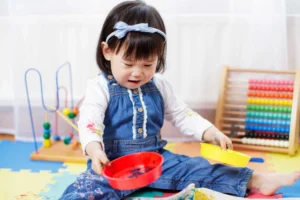
Aims & Objectives Of Art Activities For Preschoolers
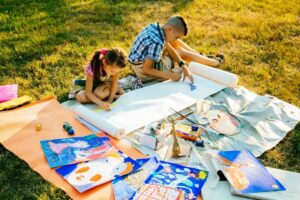
Why Fun Outdoor Art Activities Are Important
